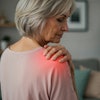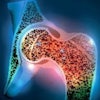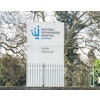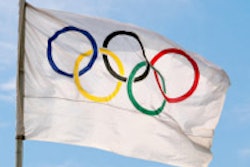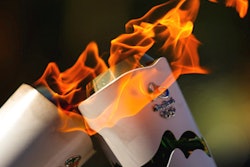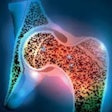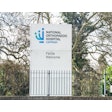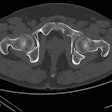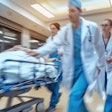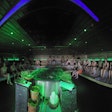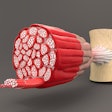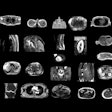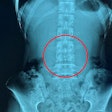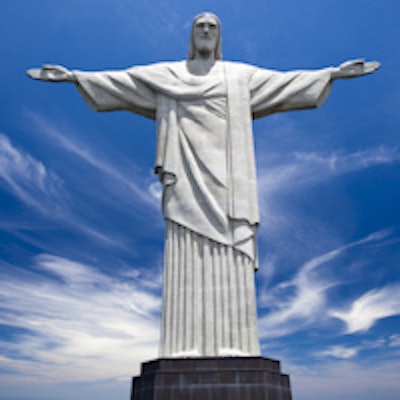
As the countdown continues to the opening of the Rio Olympics on 5 August, the organizers of the imaging service can learn from new data released about the 2015 European Games in Baku and the 2012 Olympics in London.
The inaugural European Games took place in Baku, the capital of Azerbaijan, from 13 June to 28 June 2015, under the auspices of the European Olympic Committee. It was organized by the Baku European Games Organizing Committee (BEGOC), many members of which were involved in the London 2012 or Sochi 2014 Games.
"Baku may be best known by some for Bond, BMW, and Beluga caviar. Lying on the shores of the Caspian Sea, Baku the 'windy city' combines the charm from the Ottoman Empire with state-of-the-art edifices such as the Flame Towers, fueled by the glowing economy in Azerbaijan, the Land of Fire," noted Dr. Denis Remedios, a consultant radiologist at Northwick Park in Harrow, U.K., who was a volunteer at the 2012 games.
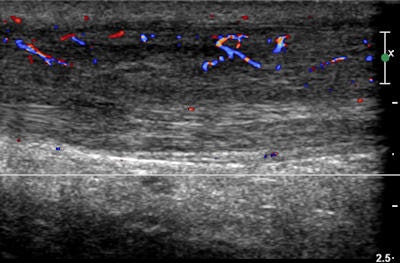 Ultrasound shows thickening of the left Achilles tendon in a 34-year-old man who is a triathlete. Neovascularity is in keeping with Achilles tendonitis. Image courtesy of Dr. Denis Remedios.
Ultrasound shows thickening of the left Achilles tendon in a 34-year-old man who is a triathlete. Neovascularity is in keeping with Achilles tendonitis. Image courtesy of Dr. Denis Remedios.To plan for future games, a critical analysis is required for diagnostic and interventional radiology needs, and this prompted Remedios and his colleagues to look at the similarities and differences between Baku and other major games with regard to three criteria: organization, clinical aspects, and the legacy of radiology services. They gathered data from Baku prospectively from the organizational stages and during the games time using a bespoke RIS-PACS (Distribution and Control Management, DCM).
Baku hosted 5,000 athletes from 50 countries in 20 sports, compared with 10,000 from 205 countries in 41 sports at London 2012. Although there was a dedicated polyclinic, there were significant differences in organization and structure.
Only six radiologists were in Baku, compared with 40 in London. MRI, CT, and radiography exams were conducted off-site, but linked via a RIS-PACS that was highly customized on site by First Solutions to allow for the constraints of the existing infrastructure, but there were still high expectations from European National Olympic Committees and the teams, the authors explained in an e-poster presentation at ECR 2016.
The smaller Baku radiological workforce meant that shifts were limited to 12 hours a day (9 a.m. to 9 p.m.), whereas at the London Olympics, a 16-hour day (from 7 a.m. to 11 p.m.) was possible. More than 90% of imaging requests were made between 9 a.m. and 9 p.m., although an on-call radiologist was available for those who required a scan outside of normal hours.
Most imaging was needed during track-and-field events for acute injuries, and also upon arrival of most teams for chronic injuries to determine fitness for competition, according to Remedios et al.
Ultrasound on top in Baku
In Baku, 281 procedures were performed, mostly ultrasound (148, 53%), compared with 1,711 in London, nearly half of which were MRI (835, 48%), as shown in the chart below. Nonionizing modalities comprised about 70% of all imaging exams. The most common injuries were similar, involving the lower limb and mainly muscle or tendon.
| Radiographs | Ultrasound | MRI | CT | Total | |
| Baku European games | 25 | 92 | 19 | 2 | 138 |
| BEGOC NOC | 36 | 56 | 30 | 21 | 143 |
| Total | 61 (22%) | 148 (53%) | 49 (17%) | 23 (8%) | 281 |
| London Olympic Games | 405 (24%) | 392 (23%) | 835 (48%) | 79 (5%) | 1711 |
| Injured body area | Baku % | London % |
| Head | 3.6 | 1.3 |
| Neck | 0.4 | 0.2 |
| Spine | 4.6 | 13.2 |
| Chest | 2.1 | 3.9 |
| Thorax/ribs | 1.4 | 0.1 |
| Abdomen/pelvis | 10.0 | 6.5 |
| Shoulder/clavicle | 6.8 | 7.7 |
| Upper arm | 1.1 | 0.1 |
| Elbow | 0.7 | 3.2 |
| Forearm | 1.1 | 0.2 |
| Wrist | 2.8 | 3.3 |
| Fingers/hand | 3.9 | 5.0 |
| Hips | 3.6 | 3.6 |
| Thigh | 7.8 | 6.0 |
| Leg | 2.8 | 0.6 |
| Knee | 7.5 | 16.9 |
| Lower leg | 1.8 | 6.4 |
| Ankle | 13.9 | 12.9 |
| Foot | 4.6 | 8.5 |
Extremity imaging of injuries to the ankle, knee, thigh, and shoulder accounted for more than a third of investigations in Baku. The higher proportion of head and torso investigations in Baku was due to the higher number of fighting sports, whereas the more common spine and knee injuries in London may have been due to a larger track and field component, the authors stated.
There were few image-guided interventions in Baku, and like London, they were limited by a "no needle" policy in the athletes' village. In both games, the value of a multidisciplinary team discussion room and an experienced radiological opinion was reiterated by polyclinic professionals and National Olympic Committee doctors.
"Similarities between the European and Olympic Games stem from clinical needs and injuries; differences are in sports, scale, and resource," they pointed out. "Planning for the next European Games should address these with specific regard to organization, service provision of clinical radiology, and legacy. The intangible legacy of enhanced sports imaging lives on long after 'Team Radiology' has left."
Similar to London's legacy of a dedicated polyclinic, a scaled-down clinic remains in Baku to address local needs in a new suburb, and the enhanced practice of musculoskeletal imaging has been a winner in both cities. Like most host countries, Azerbaijan has the added benefit of a legacy of sport and success, noted Remedios and colleagues.
Among the injured athletes treated in Baku were the following:
- Endurance athlete with a grade 4 chronic bone-stress fracture of the right proximal femur with an acute adductor tear. Plain radiograph and short-tau inversion recovery (STIR) MRI showed the corticated fracture margins of the proximal femoral fracture with no appreciable marrow edema, but considerable muscle edema from the acute adductor grade 2 tear.
- Hurdler with an inversion ankle injury. Color flow ultrasound showed a grade 2 partial tear of the anterior talofibular ligament.
- Gymnast who fell from the rings. STIR MRI sequence showed a grade 3 complete avulsion of the biceps tendon of insertion.
To view the clinical cases and the full e-poster from ECR 2016, click here. Also, AuntMinnieEurope.com has teamed up with the British Institute of Radiology (BIR) to organize a meeting about sports imaging and the Rio Olympics. It will be held in London on 27 May. For further information about the London event, please click here.
